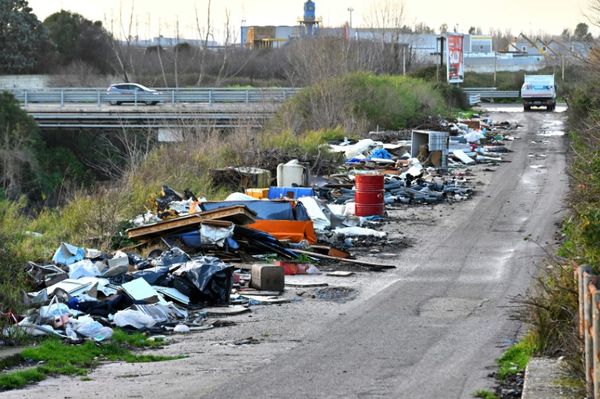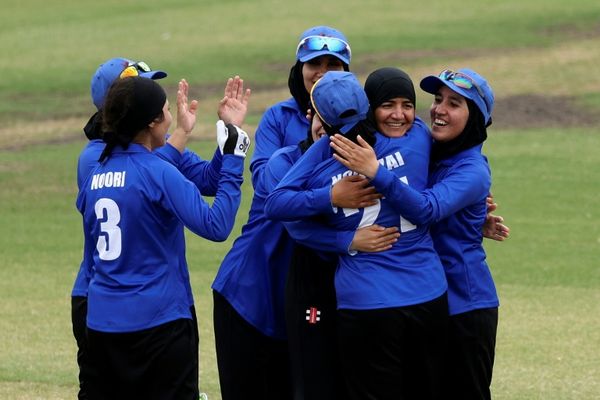
The secret of the Six Nations is beautifully simple. To southern hemisphere eyes it must be strange to hear people in the north rhapsodising about a competition frequently played in freezing temperatures with excessive amounts of kicking between sides who, for the most part, remain unlikely to thrash the world's best. To which there is only one answer: get yourself up here, buy a ticket to the Millennium Stadium or Croke Park and study the faces of players and spectators during the anthems. The formula remains unchanging but the possibilities are endless.
Snow or ice notwithstanding, it also generates more heat than any comparable annual international tournament in any other sport. If you had to boil it down to a single word it would be "Passion". It is the P-word which, for example, still tempts Welshmen to Scotland days in advance of a Six Nations game at Murrayfield. When I lived in Edinburgh in the 1980s you would start noticing middle-aged men in red and white scarves, buttonhole daffodils already the worse for wear, swaying down Princes Street on the Monday afternoon before a Saturday fixture. By any standards that's a hell of a long pre-match session.
Admittedly, there are fears that migratory numbers, with the recession and all, may be slightly reduced this year. England, for example, are already reporting that tickets for all three of their home games are still available for the first time in ages. Money, clearly, is a major factor but you have to wonder how many people have looked at the £83 cost of a top-priced ticket, reflected on England's autumn travails and opted for a matinee showing of Slumdog Millionaire instead. Given events at Twickenham lately they may even find Martin Johnson buying Maltesers in the foyer.
The Six Nations, though, has always been a tidal phenomenon, notable for its emotional ebb and flow. In the past 20 seasons France have won the title eight times and England seven, with Wales or Scotland triumphant in the other five years. And here's a good stat: no country has ever won the title outright three years in succession. When you recall the great Welsh sides of the 1970s, the formidable French squads of the 1980s and the English juggernaut of the early 1990s it is, as David Coleman used to say, quite remarkable. If Wales can secure a third grand slam in five years next month, it will be a terrific achievement.
That said, the Six Nations is subtly changing before our eyes in some ways. The number of tries per game has been falling consistently, with the 2008 tournament producing an average of 3.3 per game. The try count, it emerges, has fallen every year bar one since 2003, an indicator (among other things) of tighter defences and Italy's improvement. In 1998, by way of comparison, there were a rather more freewheeling 5.5 tries per game. There were also 4.4 penalty goals per match a decade ago, compared with an average of 5.5 penalties per game now. Should we be bothered? Not necessarily. The try-scoring averages for 1958, 1968, 1978 and 1988 were all lower than today's figures and improvements in ball technology and pitch surfaces have inevitably helped kicking ratios.
Yet, ultimately, the underlying facts and figures matter less than the public perception. England conceded only five tries in last season's championship but Brian Ashton was still relieved of his job. Scotland scored only three tries in five games but were widely regarded as having had a better season (thanks to victory over England) than Italy who scored twice as many tries and beat the Scots in Rome. Wales were conquering heroes, despite being almost buried alive in the first half of their opening game at Twickenham. The trick, as any coach will tell you, is to exceed pre-tournament expectations. If your team also manages to rate highly on the passionometer, you are halfway to paradise.
Carter's cautionary tales
It had to happen. The world's most expensive rugby player, Dan Carter, has ruptured an achilles tendon and is likely to be sidelined for a minimum of six months. Cue much gnashing of teeth in Perpignan who, quite apart from the financial outlay, may already have seen the last of the All Black fly-half in their distinctive Catalan blood-and-gold colours. The moral of the story? Short-term money-driven signings do no one much good in the long run.
Risk management
The Rugby Football Union often comes in for criticism so credit where it is due: the union is doing as much as it can to assist seriously injured players. The union's "New Vision" initiative aims to maximise an injured player's chances of reaching their full potential after a life-changing accident, offering both financial aid and personal support to those in need. The RFU also quotes some intriguing figures, courtesy of the Centre for Sports Medicine at the University of Nottingham. Apparently the risk of suffering a catastrophic injury while playing rugby union in England (0.8 per 100,000 people per annum) is lower than the global figures for American football (1.0), rugby league (2.0), skiing (2.5), ice hockey (4.0), gymnastics (8.2) and horseriding (29.7). You are also significantly more likely to die in a car crash (2.9) or on a motorbike (190). Even pedestrians (3.7) are more at risk. It's something to ponder next time you pop out to buy a paper.







